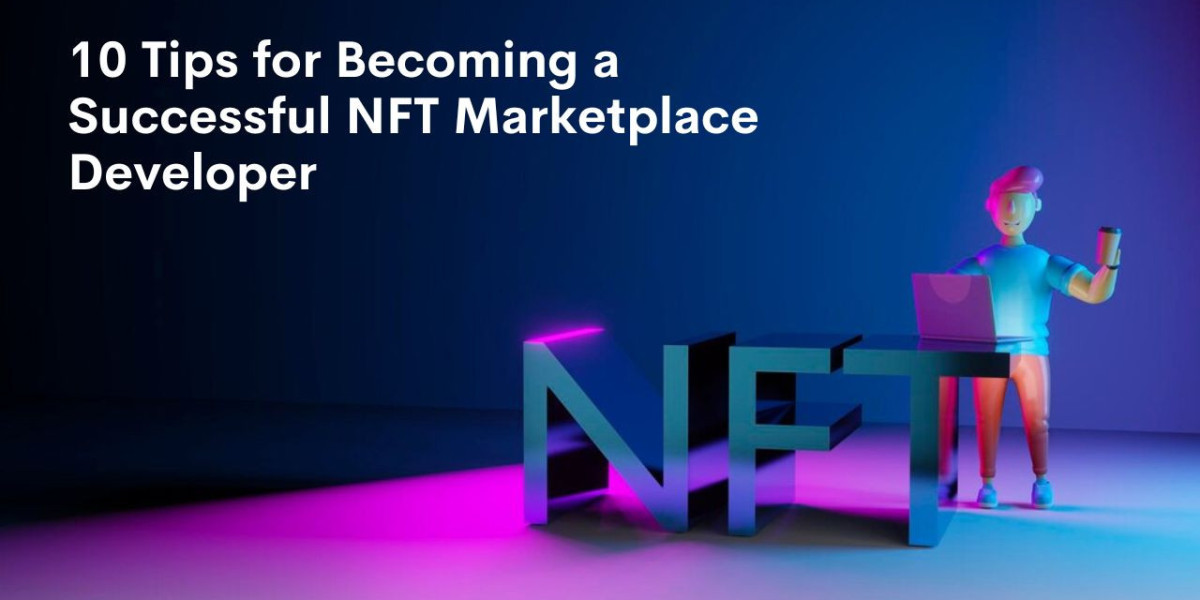The NFT market has exploded in popularity, with unique digital assets like artwork, music, and collectibles fetching millions of dollars. This surge in demand has created a fertile ground for NFT marketplace development. If you're an aspiring NFT marketplace developer, here are 10 crucial tips to set you on the path to success:
1. Define Your Niche and Target Audience:
The NFT marketplace landscape is becoming increasingly crowded. To stand out, identify a specific niche or target audience. Are you focusing on digital art, collectibles from a particular game, or something entirely new? Understanding your target user's needs and preferences allows you to tailor features and functionalities that resonate with them.
For instance, an art-centric marketplace might prioritize high-resolution image display and curation tools, while a gaming NFT marketplace might integrate seamlessly with existing wallets used within the game ecosystem.
2. Select the Right Blockchain Technology:
The foundation of any NFT marketplace is the blockchain technology it utilizes. Popular choices include Ethereum, Solana, Polygon, and Flow. Each blockchain has its advantages and disadvantages. Here's a quick breakdown:
- Ethereum: The most established blockchain for NFTs, offering a large user base and strong developer community. However, Ethereum can suffer from scalability issues and high transaction fees.
- Solana: Known for its blazing-fast transaction speeds and low fees. However, Solana is a relatively young blockchain with a smaller developer ecosystem compared to Ethereum.
- Polygon: A scaling solution for Ethereum, offering faster transactions and lower fees while leveraging Ethereum's security. A good option for marketplaces seeking a balance between cost and security.
- Flow: Designed specifically for NFTs and other digital assets, Flow offers high throughput and low transaction fees. However, its user base and developer ecosystem are still evolving.
Carefully assess your target audience, transaction volume expectations, and budget to select the most suitable blockchain for your NFT marketplace.
3. Develop Secure and Scalable Smart Contracts:
Smart contracts are self-executing contracts stored on the blockchain that govern the creation, ownership, and transfer of NFTs within your marketplace. Security is paramount. Vulnerabilities in smart contracts can lead to devastating hacks and loss of user funds. Here are some best practices:
- Rigorous Code Audits: Employ experienced blockchain security auditors to examine your smart contracts for any potential vulnerabilities meticulously.
- Multi-Signature Wallets: Implement multi-signature wallets for critical operations, requiring multiple approvals before actions can be taken.
- Stay Updated on Security Threats: The NFT landscape is constantly evolving, and new security threats emerge. Stay updated on the latest vulnerabilities and implement appropriate security measures.
Scalability is also crucial. Your marketplace should be able to handle a high volume of transactions without experiencing slowdowns or outages. Consider implementing techniques like batching transactions or using layer-2 scaling solutions.
4. Prioritize User Experience (UX) and User Interface (UI) Design:
A user-friendly and intuitive interface is critical for attracting and retaining users. Your NFT marketplace should be easy to navigate, with clear instructions for buying, selling, and managing NFTs. Here are some key considerations:
- Simple and Clean Design: Avoid cluttered interfaces. Focus on clean layouts and intuitive workflows.
- Seamless User Journey: Design a user journey that is smooth and efficient, from account creation to NFT minting and trading.
- Mobile-Responsive Design: Ensure your marketplace is accessible and functional on mobile devices, as a significant portion of users access the internet through smartphones and tablets.
- Integrate Secure and Reliable Wallets:
NFT ownership and transactions require secure wallets. Integrate with popular and well-established crypto wallets that users trust. Consider supporting a variety of wallet options to cater to different user preferences. Additionally, explore integrating features like fiat on-ramping, allowing users to purchase cryptocurrency directly using their credit cards or bank accounts, which can further improve user experience.
6. Foster Community Building:
A thriving NFT marketplace isn't just about technology; it's about fostering a vibrant community. Here are some ways to achieve this:
- Built-in Communication Tools: Integrate features like chat rooms or forums for users to connect and discuss NFTs.
- Community Events: Host online or offline events (if feasible) to bring together creators, collectors, and enthusiasts.
- Social Media Engagement: Maintain an active presence on social media platforms to connect with your audience and promote user-generated content.
A strong community fosters trust, loyalty, and organic growth for your NFT marketplace.
7. Implement Robust Anti-Money Laundering (AML) and Know Your Customer (KYC) Compliance:
The NFT space is not immune to illegal activities like money laundering. Implementing robust AML and KYC procedures helps mitigate these risks and fosters trust with users and regulators. Here are some steps you can take:
- User Verification: Integrate KYC procedures to verify user identities. This might involve collecting government-issued IDs and cross-referencing them with databases.
- Transaction Monitoring: Monitor transactions for suspicious activity, such as large, sudden transfers or transactions linked to blacklisted addresses.
- Compliance with Regulations: Stay updated on evolving regulations surrounding NFTs and cryptocurrencies. Ensure your marketplace adheres to relevant AML and KYC requirements.
8. Embrace Innovation and Stay Ahead of the Curve:
The NFT space is rapidly evolving. New standards, technologies, and use cases are constantly emerging. Here's how to stay ahead of the curve:
- Actively Follow Industry Trends: Stay informed about the latest trends in the NFT space, including new blockchain protocols, tokenization standards, and emerging use cases.
- Integrate Emerging Technologies: Consider integrating innovative functionalities like fractional ownership of NFTs or integration with the metaverse.
- Maintain a Flexible Architecture: Design your marketplace with a flexible architecture that allows for easy integration of new features and functionalities as the NFT landscape evolves.
9. Offer Competitive Fees and a Sustainable Revenue Model:
Transaction fees are a major consideration for NFT creators and collectors. Here are some strategies to consider:
- Transparent Fee Structure: Communicate your fee structure, including platform fees, gas fees (associated with blockchain transactions), and any creator royalties.
- Competitive Fee Rates: Analyze your competitors' fees and aim to offer competitive rates to attract users.
- Multiple Payment Options: Consider offering alternative payment methods beyond cryptocurrency, such as credit card integration, to cater to a wider audience.
Develop a sustainable revenue model that balances user needs with the long-term viability of your marketplace.
10. Prioritize Marketing and Brand Building:
In a crowded market, effective marketing is crucial for attracting users and establishing your brand. Here are some strategies to consider:
- Targeted Marketing Campaigns: Develop targeted marketing campaigns that reach your ideal audience across relevant channels, such as social media, NFT communities, and industry publications.
- Content Marketing: Create informative and engaging content about NFTs and your marketplace. This could include blog posts, articles, videos, or webinars.
- Collaborations and Partnerships: Partner with established NFT creators, artists, or influencers to promote your marketplace and reach a wider audience.
By building a strong brand identity and implementing effective marketing strategies, you can attract users and establish your NFT marketplace as a leader in the space.
Conclusion:
Developing a successful NFT marketplace requires combining technical expertise, business acumen, and a deep understanding of the NFT ecosystem. By following these 10 tips, you can increase your chances of building a thriving platform that caters to the needs of both creators and collectors in this dynamic and ever-evolving market. Remember, the NFT space is still nascent, and new opportunities and challenges will emerge. Stay adaptable, embrace innovation, and focus on building a user-centric platform that fosters a vibrant community. By doing so, you can position your NFT marketplace for long-term success.



